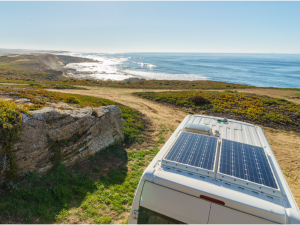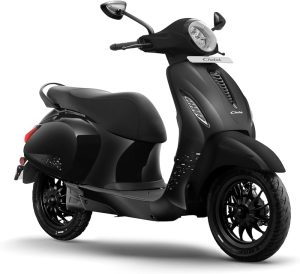Automotive Aspirations – A Guide to Car Inclusions and Upgrades

Shopping for a new car is a thrilling time. There are not many phases of life that see you capable of this purchase, so it’s natural to be equal parts excited, scared, anxious and joyous. There’s a lot to sort out too – picking a make, model, sorting your finances, finding a dealership to purchase from and making the big decision. At some point during the process, your salesperson will bring up the discussion about inclusions and upgrades. If you don’t know much about these options, fear not.
This helpful article will assist you to discover your automotive aspirations and walk you through the possibilities.
Ask About Factory Standard Features First
Most cars come with their basic features first that all price points of the model come with. Take, for example, the Kia Optima. This sporty, midsize sedan comes with LED headlights, rear lights, a chrome grille, a large touchscreen with smartphone connectivity, a premium sound system, and a push-button start. From there, you can then upgrade your interior, tyres, rims, or even your engine if you’re serious about your horsepower.
Insurance
A dealership will often package insurance in with your new car purchase. It pays to take out an insurance policy, either through the dealer or via your insurance provider. We strongly recommend a comprehensive policy. While you may be the safest driver on the roads, you can’t guarantee the behaviour of other drivers. Should disaster strike, you’ll at least get the market or agreed value back and be able to replace it as soon as possible. Consider choosing a reliable insurance policy as an inclusion with your purchase.
Servicing and Maintenance
Ask your salesperson what sort of servicing and maintenance they can throw in to sweeten the deal. Some manufacturers have a standing offer – for example, Kia offers a seven-year warranty on all new models, and currently offer three years of scheduled servicing as well. Some brands will throw in the servicing, or cap it at an affordable fixed price. This is an essential inclusion in your purchase as it will help to reduce how quickly your vehicle depreciates and keep it on the road, running smoothly to get you from A to B.
Performance Enhancements
Performance enhancements can significantly elevate the driving experience of a car. Here are some common performance upgrades:
1. Engine Tuning:
- Performance Chips: Aftermarket performance chips or tuners can optimize the engine’s performance by adjusting fuel injection, timing, and other parameters.
- ECU (Engine Control Unit) Tuning: Customized ECU tuning can maximize power output and improve throttle response.
2. Suspension and Handling:
- Performance Suspension Upgrades: Upgrading shocks, struts, and springs can enhance handling and responsiveness. Adjustable coilovers allow for fine-tuning the ride height and stiffness.
- Larger Wheels and Tires: Upgrading to larger wheels with low-profile, high-performance tires can improve grip and handling.
3. Brake Systems:
- High-Performance Brake Pads and Rotors: Upgraded brake pads and rotors can improve braking performance and reduce fade during aggressive driving.
- Upgraded Brake Calipers: Performance brake calipers provide better clamping force and heat dissipation.
4. Exhaust Systems:
- Sport Exhaust Systems: Upgrading to a sportier exhaust can improve exhaust flow, increase horsepower, and enhance the engine sound.
- Performance Headers: High-performance headers can improve exhaust scavenging, contributing to increased power.
5. Air Intake Systems:
- Cold Air Intake: Replacing the stock air intake with a cold air intake system can increase airflow to the engine, improving horsepower and throttle response.
- High-Flow Air Filters: Upgrading to high-flow air filters allows more air into the engine, improving performance.
6. Forced Induction:
- Turbochargers and Superchargers: Adding a turbocharger or supercharger increases the engine’s air intake, resulting in higher power output.
- Intercooler Upgrades: Upgraded intercoolers help cool the compressed air from forced induction systems, improving efficiency.
7. Transmission Upgrades:
- Performance Clutch Kits: Upgrading the clutch can improve the transmission’s ability to handle increased power.
- Short-Throw Shifters: Shorter shifters reduce the throw between gears, enhancing the driving experience.
8. Differential Upgrades:
- Limited-Slip Differential (LSD): LSD improves traction and handling by distributing torque more evenly between the drive wheels.
- Performance Gear Ratios: Changing gear ratios can optimize acceleration and top speed.
9. Weight Reduction:
- Lightweight Components: Upgrading to lightweight materials, such as carbon fiber body panels, can reduce overall vehicle weight, improving acceleration and handling.
- Stripped Interiors: Removing non-essential components from the interior can reduce weight but may sacrifice comfort.
10. Dyno Tuning:
- Dyno Testing and Tuning: Fine-tuning the car’s performance on a dynamometer (dyno) allows for precise adjustments to maximize power and efficiency.
Always consider the compatibility of these upgrades with your car model, and it’s advisable to consult with professionals or experienced tuners for personalized advice based on your driving preferences and goals.
Car Accessories
The final inclusions you should consider are optional accessories. These aren’t essential to driving your car but can be a nice touch if you have a bit of extra money to spend. You are spoiled for choice here. You can opt for deluxe floor mats to keep your car neat and tidy, dash mats to protect your dashboard from wear from the sun, mud flaps to keep your car that little bit cleaner during wet weather, or even a cargo organiser for those busy families that spend a lot of time on the road.
You can also mount an iPad cradle on the back seat to keep the kids’ entertained on those long road trips, mount crossbars to the roof so you can carry more, or even include a bicycle mount on the roof or boot if you’re a cycling family. The options are many and will depend on your needs and your budget.
A Car Savvy Conclusion
You have a range of options for inclusions and upgrades when you purchase a new car. To begin with, ask your salesperson what comes with the vehicle as it is, then considers what you need on top of that. An insurance policy and servicing and maintenance are essential inclusions. Finally, you’ll have the choice of some optional accessories to make your driving life smoother. Happy trails!






